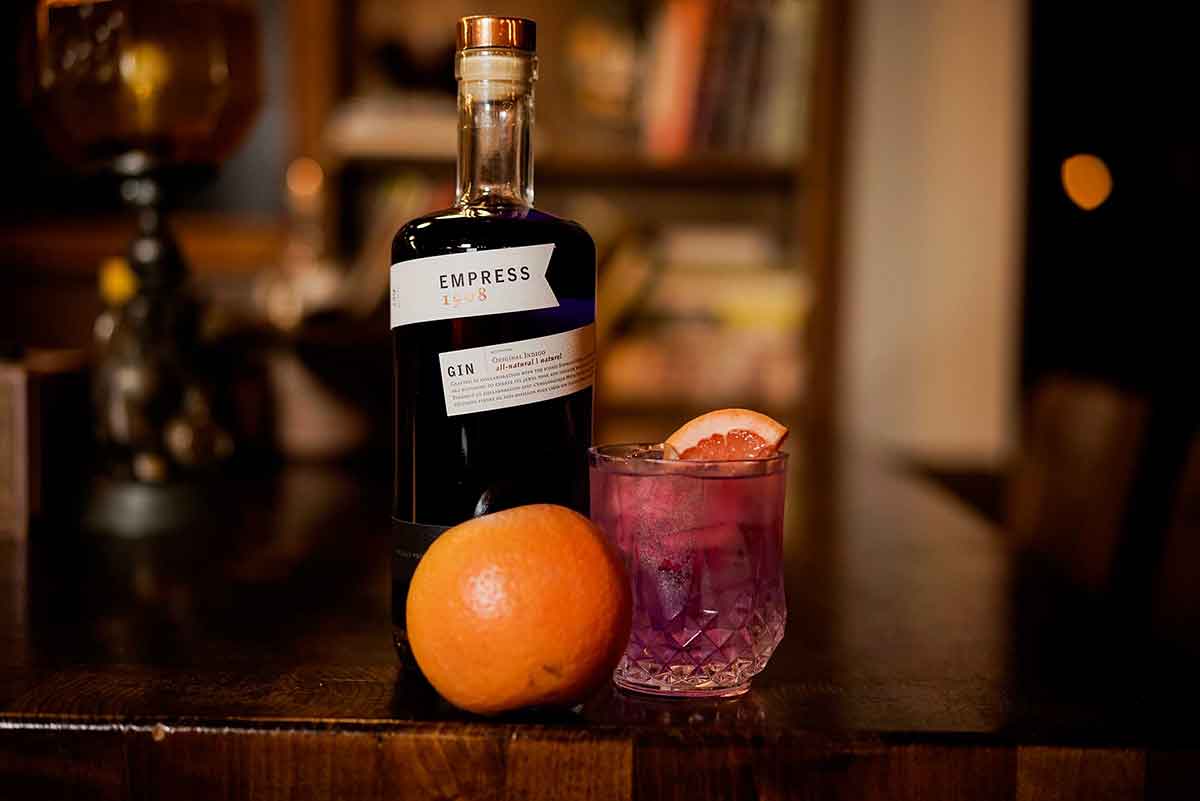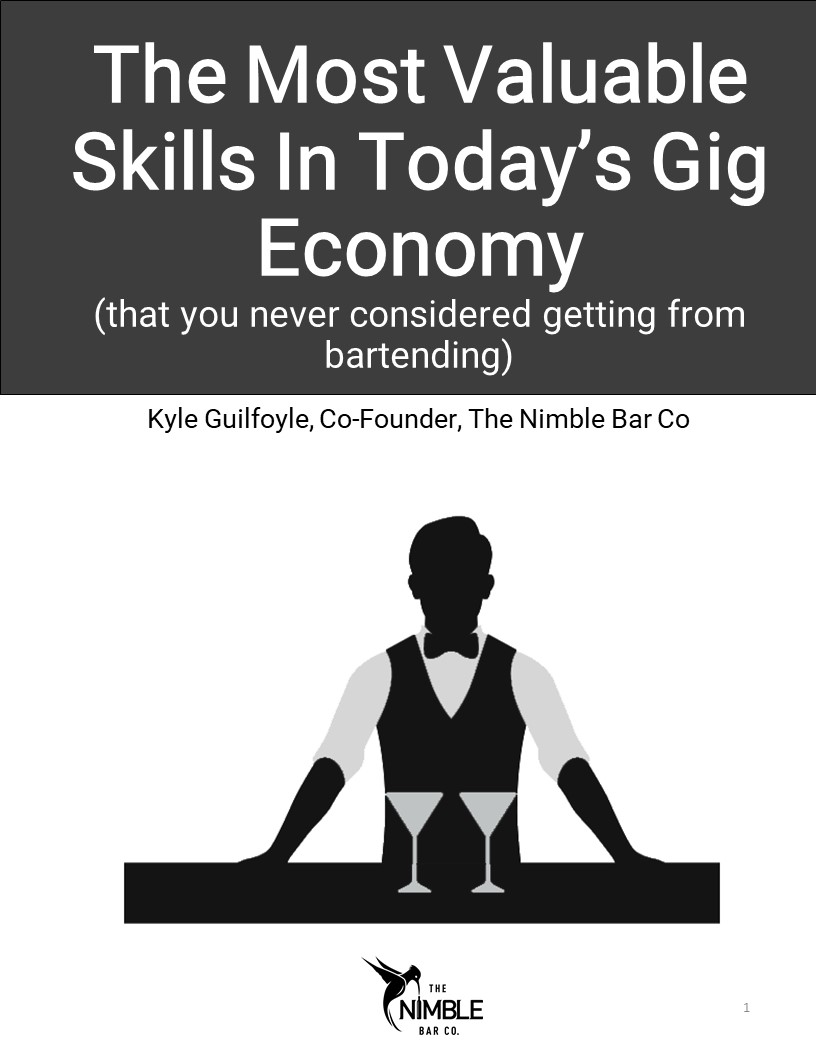The story behind Empress 1908 Gin’s ingredients, colour change, taste, where it’s from, and our favourite cocktails
One of the most strikingly coloured spirits you will find on liquor store shelves and back-bars around the world today is Empress 1908 Gin from Sidney, British Columbia. While most gin purists would scoff at a gin that isn’t clear, once you dig under the surface of what makes this gin, you’ll realize that it honours time-tested distillation traditions (and still manages to feature some cool modern twists).
You might as well start with a drink in hand, so I’ll start with this for point number 1:
1. Empress 1908 Gin and Tonic Wins The Award For Best Looking G&T
Empress Gin will make the most beautiful G&T you will ever have. Especially if you pair it with grapefruit to compliment the grapefruit peel botanicals in the gin itself, and a great quality tonic. President and Master Distiller, Peter Hunt, recommends Fever Tree Elderflower or Fever Tree Premium Indian.

2. An Iconic Victoria Hotel + The Year It Was Built = Where the Name Comes From
Nestled in the southern part of Vancouver Island, just outside of Victoria, this indigo gin celebrates the heritage of the island on which it was born.
In 1908, the famous Empress Hotel was built in Victoria, British Columbia. An iconic part of the downtown Victoria skyline, the Empress Hotel is a regal building that stands at the foot of the Inner Harbour.
The reason the Empress Hotel and Victoria Distillers are such good friends?
When Victoria Gin launched in 2007, they did so straight from the Empress Hotel’s lobby, and they’ve been a fixture in the Empress Hotel’s bar program ever since.
So it seemed fitting that a decade after Victoria Gin’s launch, the distillery was looking to expand its portfolio while the Empress Hotel was going through a huge $60M restoration. Naturally it was the perfect time for the two to join forces and create a badass gin.
3. The Colour is Actually a Happy Accident
The Empress Hotel is really famous for doing Afternoon Tea every day. It’s not that expensive, only $82.00 for…TEA.
Locally, it’s well-known that if you get a chance to serve Afternoon Tea at the Empress, you’re easily clearing 6 figures a year. That’s right, there are folks earning more than $100,000.00 a year by just serving tea. It’s amazing.
Given that Afternoon Tea is such a long-standing and luxurious tradition, Empress Gin wanted to capture some of that in their bottle. They did this by experimenting with a number of signature tea blends from the Empress Hotel, and they ended up with two: Blue Suede Shoes, featuring butterfly pea blossom, and the Empress Blend Tea made by the Metropolitan Tea Company (tagline: from crop to cup).
It was while they were testing different teas, in particular the Blue Suede Shoes blend, that they discovered that the butterfly pea blossom imparted an indigo hue to the gin.
BTW this is kind of proof that they didn’t set out to just create a gimmicky colourful gin.
4. There’s a Subtle Nod to India. Here’s why.
There are two very uncommon ingredients in Empress Gin and that’s 1) cinnamon and 2) ginger. WTF? Cinnamon and ginger in a gin!
Between the years 1876 and 1948, British queens and kings were called Empress and Emperor of India, respectively. Queen Victoria was the first Empress of India, and so Victoria Distillers wanted to include a subtle nod with popular Indian spices, ginger and cinnamon.
5. There’s Nothing ‘Violet’ About the Flavour
Overall, the experience is akin to a traditional London dry gin…but with modern flair. Here’s how I would describe the experience of tasting Empress Gin by itself.
-
Nose: Delicate juniper that’s been blushed with subtle rose notes by an angel
-
Palate: Said angel gets spanked by demonic notes of spiced grapefruit
-
Finish: A long, earthy, and warming black tea
A lot of folks mention tasting violet, but when you blind taste it, there’s really nothing violet about it.
6. The Colour Can Change To Blue OR Pink. Here’s How.
Butterfly pea blossoms have these little molecules called anthocyanins — pigments that change colour depending on their PH levels. They’re red when they’re acidic, purple when they’re neutral, and blue when they’re basic.
So if you add acid, say lemon juice, to Empress Gin, it will become a beautiful red-pink colour. And if you add something basic to it, like cucumber, it will turn blue.
President and Master Distiller, Peter Hunt, recounts bringing the new gin to market at Victoria’s 2017 Art of the Cocktail. His team was experimenting mixing up new drinks, and when they lined up all their creations, they realized that some were purple, some were pink, and some were blue.

“That’s when we had this aha moment that the gin actually changed colour as the PH changed. And we were like ‘okay, that’s pretty cool.’ It was one more layer in the creation of this product,” says Peter.
7. This Gin Is Crushing It
When I sat down with Peter, he also told me that when Victoria Gin was at its peak, it was selling 3,000 cases per year. With Empress 1908 Gin, they’re doing 7,400 cases in a MONTH, and it’s growing. They’ve had to more than double their production facility.
It’s not just one of the best-selling gins in the ultra-premium category, it’s even outselling long-standing economy behemoths like Beefeater and Gordon’s in many markets.
8. The Master Distiller’s Favourite Empress 1908 Gin Cocktails Are Dead Simple
Windsor Garden
2 oz of Empress Gin, 0.5 oz simple, 0.75 oz lemon juice, muddled thyme, mint, basil, rosemary (basically whatever Peter can find in his garden)
Glass: Collins
Method: Build all ingredients in the Collins class, muddle herbs, and add ice (optional: top with a splash of soda)
Garnish: Sprig of rosemary
The Bowery
2 oz Empress 1908 Gin, 0.75 oz Giffard Pamplemousse, 0.5 oz dry vermouth
Glass: small cocktail coupe
Method: stir ingredients, and strain neat in the coupe
Garnish: Grapefruit twist
If you enjoyed this, join 3000+ bartenders in our Boomerang community and receive content like this to your inbox every two weeks!





